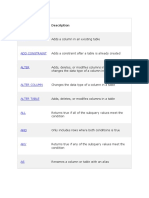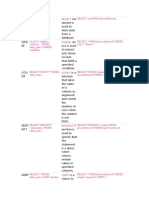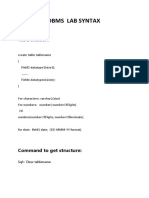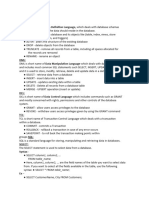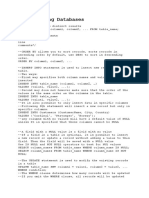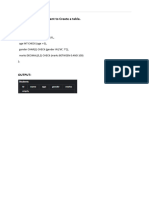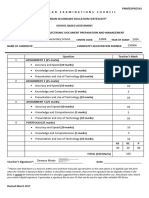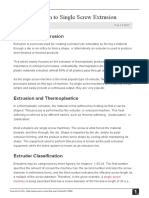0% found this document useful (0 votes)
50 views9 pagesDB Queries
The document provides examples of SQL queries for various database operations like creating tables, adding constraints, joining tables, aggregating and filtering data. It includes examples of DDL statements to define schema and DML statements to manipulate data.
Uploaded by
wardah.2944Copyright
© © All Rights Reserved
We take content rights seriously. If you suspect this is your content, claim it here.
Available Formats
Download as DOCX, PDF, TXT or read online on Scribd
0% found this document useful (0 votes)
50 views9 pagesDB Queries
The document provides examples of SQL queries for various database operations like creating tables, adding constraints, joining tables, aggregating and filtering data. It includes examples of DDL statements to define schema and DML statements to manipulate data.
Uploaded by
wardah.2944Copyright
© © All Rights Reserved
We take content rights seriously. If you suspect this is your content, claim it here.
Available Formats
Download as DOCX, PDF, TXT or read online on Scribd
/ 9






